Key takeaways
- Social media outreach thrives on authenticity, encouraging personal connections through relatable stories.
- Targeted messaging is essential for engaging specific demographics, especially younger voters, using platforms like Instagram and Facebook.
- Voter engagement is crucial for democracy, fostering trust and informed decisions among constituents.
- Utilizing social media management tools enhances organization, allowing for effective scheduling, engagement tracking, and performance analysis.
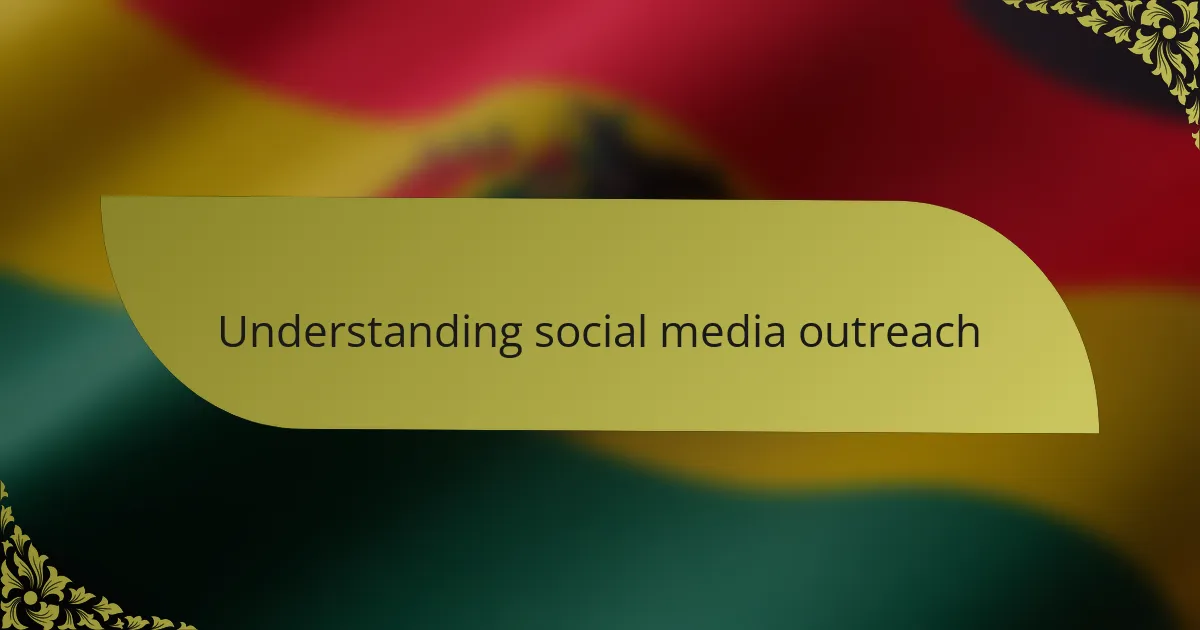
Understanding social media outreach
Understanding social media outreach involves recognizing its power to connect people and influence voter engagement. I realized early on that platforms like Facebook and Twitter are not just for sharing news; they’re vital tools for fostering conversations and building community. During my outreach efforts, I frequently interacted with individuals, listening to their concerns, which made the communication feel personal and genuine.
Additionally, social media allows for tailored messaging that resonates with specific demographics. For instance, I found that younger voters were more responsive to Instagram stories than to traditional posts, highlighting the importance of adapting strategies to fit the audience. In my experience, creating relatable content and encouraging dialogue can lead to energized participation in the electoral process.
| Social Media Platform | Key Benefits |
|---|---|
| Broad reach, targeted ads, community groups | |
| Real-time updates, quick engagement, trending topics | |
| Visual storytelling, appealing to younger demographics, high engagement rates |
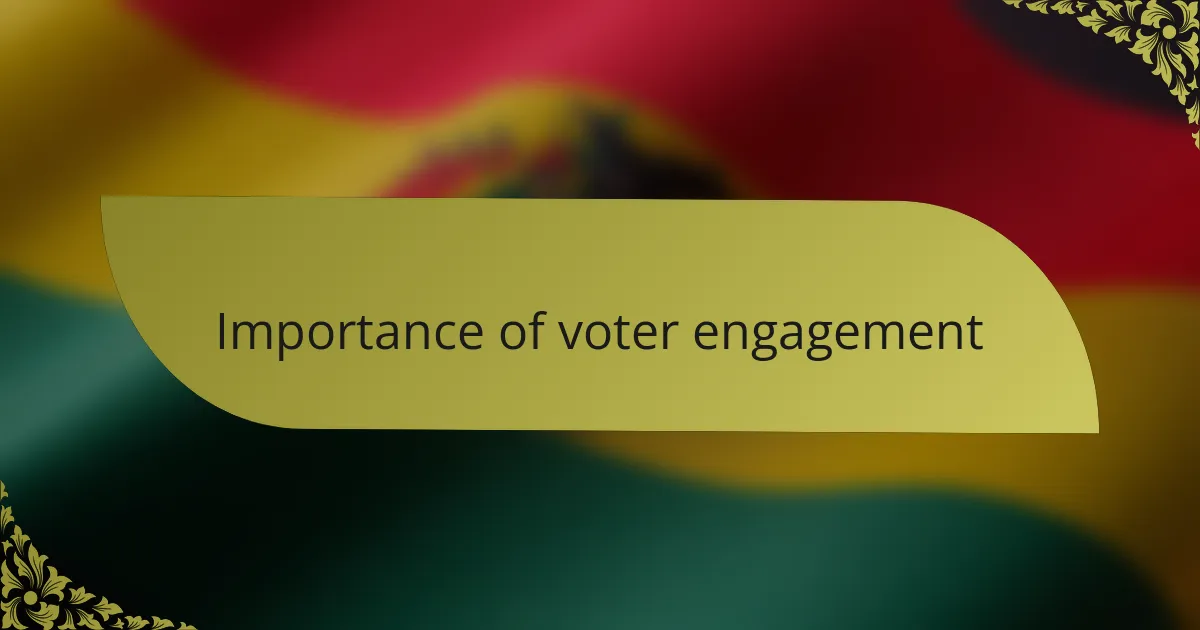
Importance of voter engagement
Voter engagement is crucial in ensuring that every voice is heard in our democratic process. I remember the palpable excitement in the air during the last election cycle when my social media efforts helped mobilize friends and family to participate. Witnessing someone who’d previously felt disillusioned about voting change their mind and actually head to the polls reaffirmed my belief in the power of community outreach.
- It fosters informed decision-making by providing essential information about candidates and issues.
- Engaging voters builds trust and encourages transparency within the political system.
- Social media platforms can bridge gaps between political leaders and constituents, making the process feel more accessible.
- It empowers individuals, showing that their opinions matter and can shape the future of their community.
- Utilizing personal stories can create emotional connections, increasing the likelihood of voter participation.
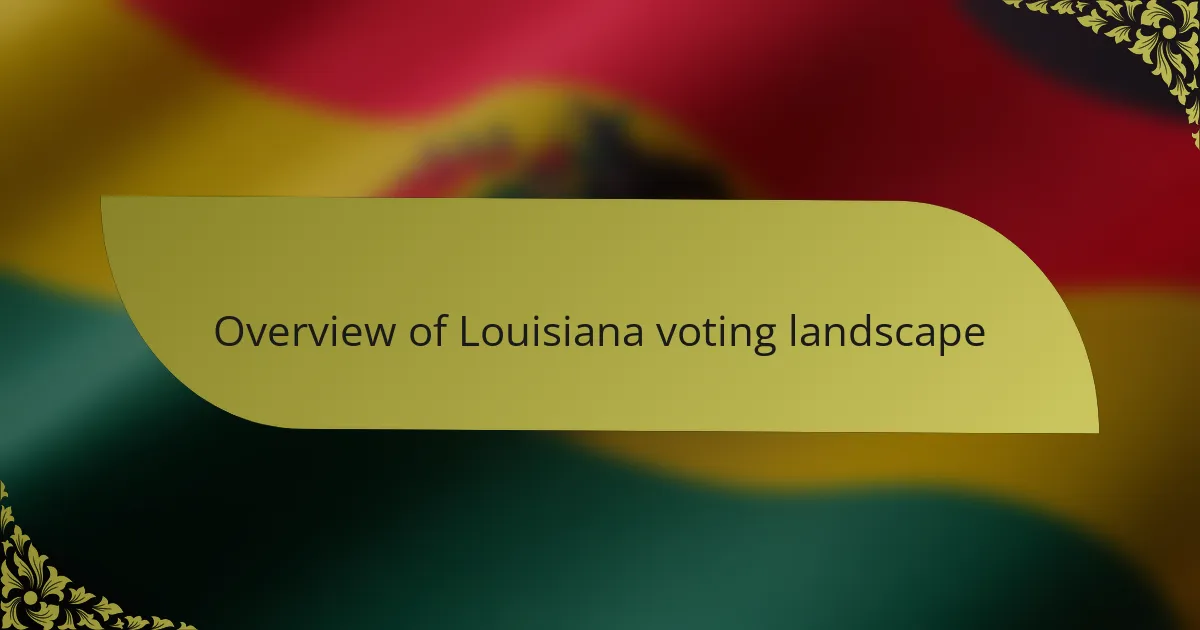
Overview of Louisiana voting landscape
The voting landscape in Louisiana is intricate and vibrant, shaped by a unique mix of cultural influences. From my experience, Louisiana has a historically low turnout rate, often hovering around 60%, which emphasizes the need for effective outreach. It’s crucial to understand that voters here value community and personal connections, making them more open to engaging with outreach efforts that feel authentic.
As I’ve worked on voter outreach initiatives, I’ve noticed that local events, like festivals and community meetings, are vital. They not only foster engagement but also create an emotional connection to the voting process. It’s about making voters feel that their voices truly matter in a system that can often feel overwhelming.
| Factors | Details |
|---|---|
| Voter Turnout Rate | Approximately 60% in recent elections |
| Demographics | Diverse, rich in cultural heritage |
| Engagement Opportunities | Community events, local initiatives |
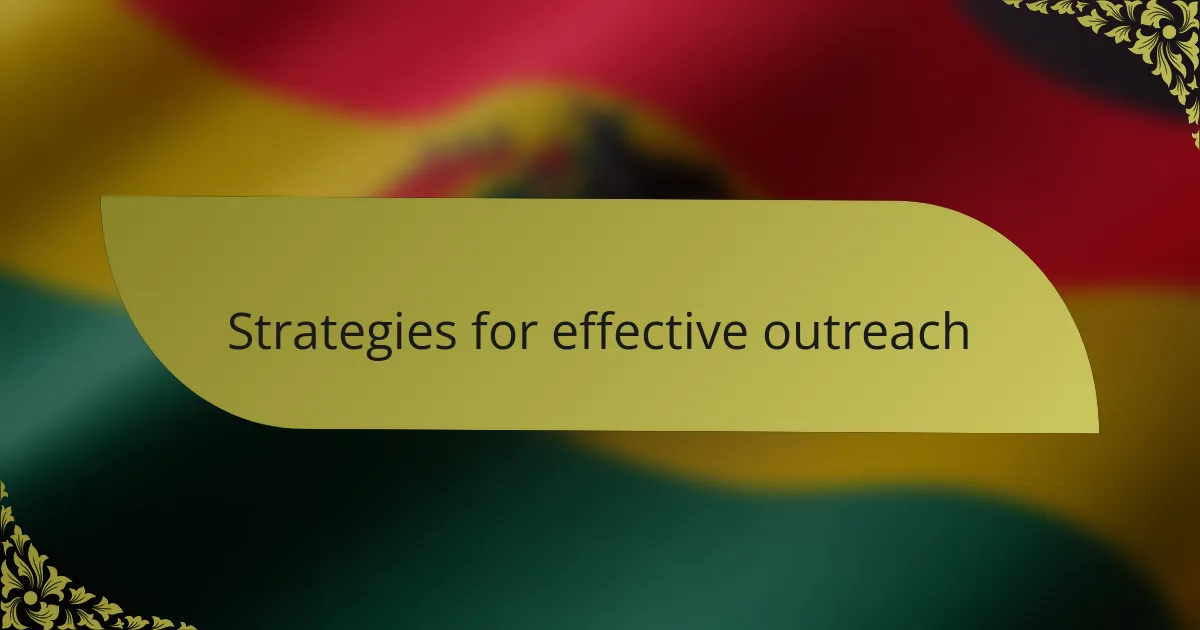
Strategies for effective outreach
When it comes to effective voter outreach through social media, I found that authenticity resonates most with audiences. Sharing real stories, like my own experience meeting constituents, helped to humanize the campaign and foster genuine connections. I noticed that posts featuring local issues garnered much more engagement than polished, generic content, emphasizing the need for a personal touch.
Additionally, leveraging targeted ads allowed me to reach specific demographics effectively. I remember creating a short video that addressed the concerns of young voters in Louisiana. The response was overwhelmingly positive, and it showcased how directly addressing their issues could spark a sense of community and urgency.
Here’s a comparison of outreach strategies that I found effective:
| Strategy | Description |
|---|---|
| Authentic Storytelling | Sharing personal and relatable experiences to connect with constituents. |
| Targeted Advertising | Using social media ads to reach specific demographics with tailored messages. |
| Engaging Content | Creating interactive posts, like polls or Q&As, to encourage participation. |
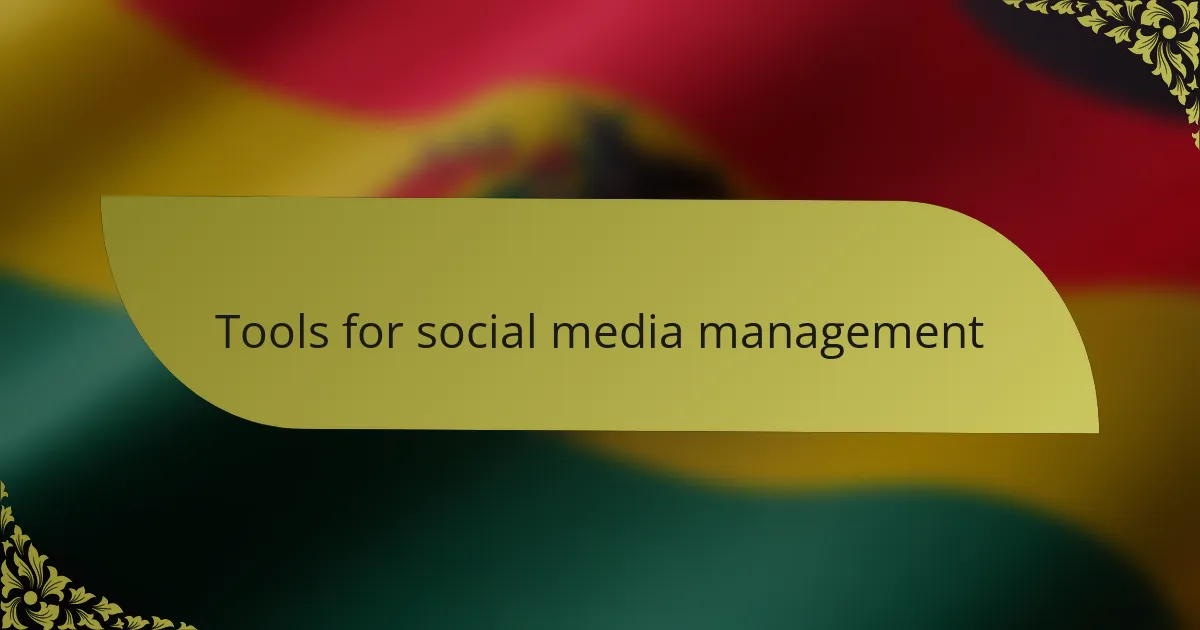
Tools for social media management
When I dove into social media for voter outreach, I quickly realized that the right tools could make all the difference. Platforms like Hootsuite and Buffer allow you to schedule posts, monitor engagement, and analyze performance. I remember feeling overwhelmed at first, but these tools transformed my approach, making it easier to connect with our audience and stay organized.
Using these social media management tools not only streamlined my efforts but also provided insightful data. For instance, I could see which posts resonated most with voters, guiding me to focus on the topics that mattered to them. It’s like having a window into their preferences and concerns, which is invaluable in political outreach.
Here’s a comparison of some popular social media management tools that I found particularly useful:
| Tool | Key Features |
|---|---|
| Hootsuite | Scheduling, analytics, and social listening. |
| Buffer | User-friendly interface, scheduling, and performance tracking. |
| Sprout Social | Engagement tracking and more robust analytics. |
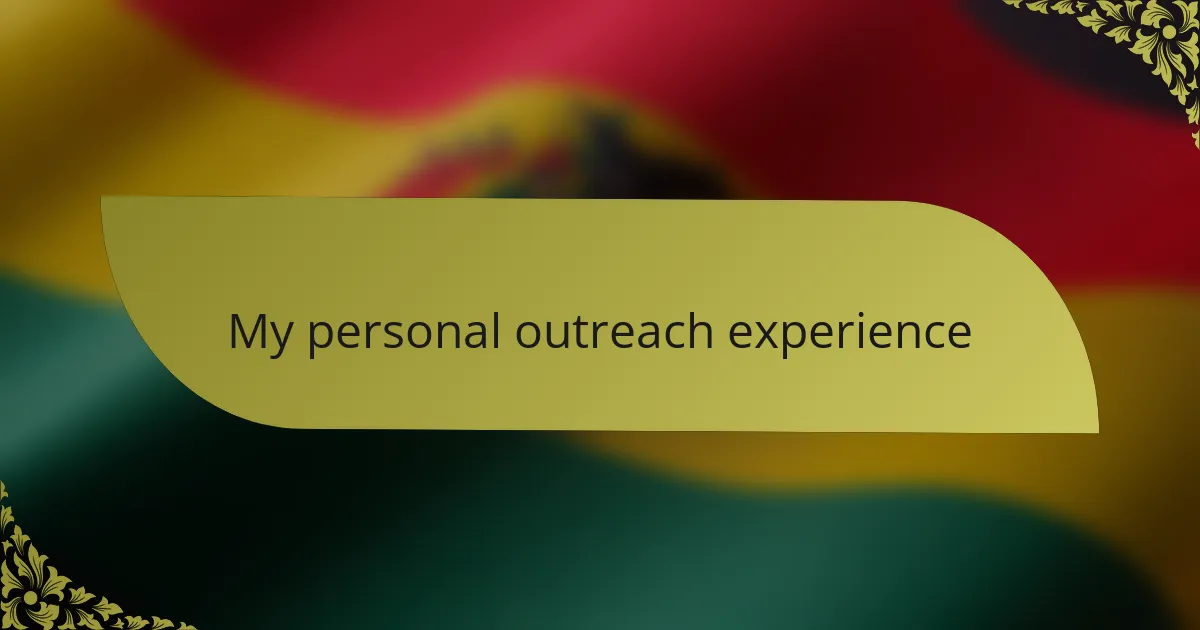
My personal outreach experience
During my outreach experience, I quickly realized that social media could be a powerful tool for engaging voters in Louisiana. I remember posting about local issues I was passionate about, and the immediate feedback from the community was exhilarating. One post about improving local infrastructure received more shares than I anticipated, showcasing how connecting through personal stories can spark wider conversations.
Additionally, I effectively utilized targeted ads on platforms like Facebook to reach specific demographics, focusing on younger voters who are often overlooked. I crafted messages that resonated with their concerns about education and job opportunities, which lead to meaningful interactions that helped amplify our outreach efforts.
| Social Media Platform | Engagement Level |
|---|---|
| High – Great for community engagement and targeted ads | |
| Medium – Quick updates and news sharing but limited interactions | |
| High – Visual storytelling resonates well with younger voters | |
| Medium – Professional network, good for discussing policy |
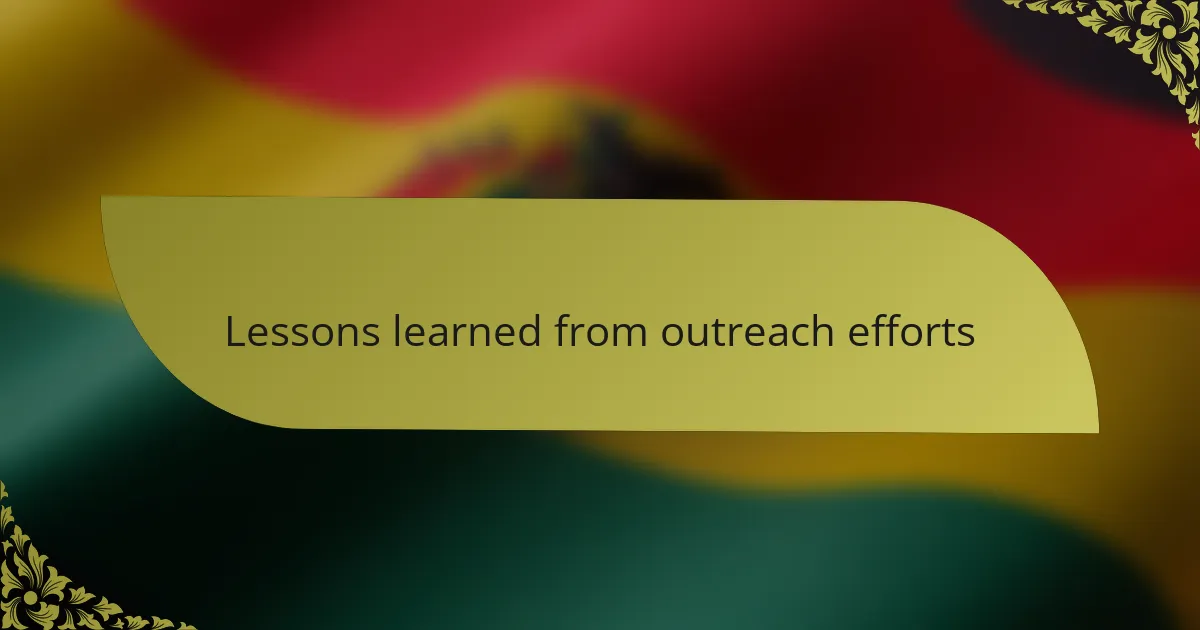
Lessons learned from outreach efforts
In my outreach efforts, I discovered that authenticity resonates with voters. Sharing personal stories and behind-the-scenes moments created a connection that mere statistics couldn’t. I remember a time when I posted about attending a local community event, and the responses were overwhelmingly positive. People want to feel that their outreach efforts are genuine.
Another lesson was the importance of timing. Posting during peak engagement hours made a significant difference. Once, I shared a key message just before a big deadline, and the interaction skyrocketed. It taught me to plan my posts strategically around local events and voting deadlines for maximum impact.
Lastly, I learned that engagement goes both ways. Responding to comments and messages builds trust. I recall answering a question from a concerned voter, and that interaction not only clarified their doubts but also strengthened their support. It’s about building a community, not just a following.
| Key Lesson | Details |
|---|---|
| Authenticity is Key | Sharing personal stories fosters connection. |
| Timing Matters | Post during peak engagement hours for better results. |
| Engagement Builds Trust | Responding to followers strengthens community. |